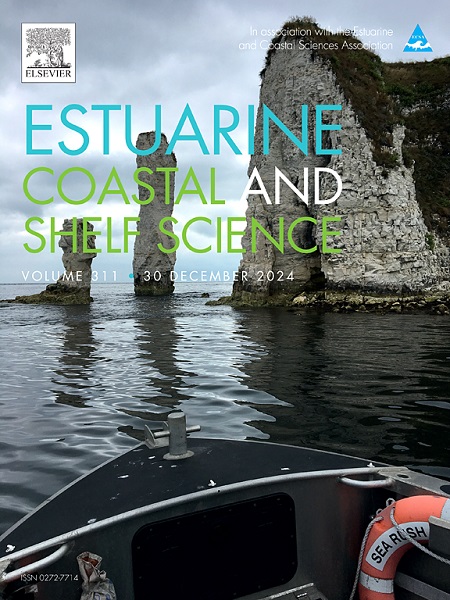Unraveling the taxonomic and functional structure of benthic communities from tropical muddy bottoms chronically disturbed by shrimp trawling
IF 2.6
3区 地球科学
Q1 MARINE & FRESHWATER BIOLOGY
引用次数: 0
Abstract
The continental shelf provides many important ecosystem services, including coastal protection, recreation, tourism, climate regulation, biodiversity, and food resources. However, this ecosystem has been undergoing degradation due to numerous human activities, both land- and ocean-based, with shrimp trawl fishing being one of the most impactful. This activity physically affects the seabed, alters biological communities, causes biodiversity loss, and compromises ecosystem functions and services. In this research, we characterized the taxonomic and functional structure of epibenthic communities in tropical muddy bottoms chronically trawled by shrimp fisheries on the shallow continental shelf of northeastern Brazil. We tested the hypotheses that: i) the taxonomic and functional structure of the communities is influenced by seasonality and depth, with greater diversity during rainy periods and at shallower depth; and ii) the epibenthic communities exhibit low functional redundancy and high functional vulnerability. Epifauna was studied in two fishing grounds during rainy and dry periods at depths of 10 and 20 m. Communities were dominated by species with traits less sensitive to physical impacts, such as large, hard-shelled scavenger species that crawl on the sediment surface. The taxonomic structure was affected by seasonal variation, whereas the functional structure was more strongly related to fishing grounds. The temporal pattern found may be attributed to seasonal changes in oceanographic parameters, such as salinity and temperature, which differ between dry and rainy periods. These results highlight the vulnerability of epibenthic communities in chronically trawled muddy bottoms of the continental shelf.

揭示受拖网捕虾长期干扰的热带泥泞底栖生物群落的分类和功能结构
大陆架提供了许多重要的生态系统服务,包括海岸保护、娱乐、旅游、气候调节、生物多样性和食物资源。然而,由于陆地和海洋的许多人类活动,这一生态系统正在退化,虾拖网捕捞是影响最大的活动之一。这种活动对海底产生了物理影响,改变了生物群落,导致生物多样性丧失,并损害了生态系统的功能和服务。在这项研究中,我们对巴西东北部浅层大陆架上长期拖网捕虾的热带泥泞底栖生物群落的分类和功能结构进行了表征。结果表明:(1)群落的分类和功能结构受季节和深度的影响,在雨季和较浅的深度具有较大的多样性;底栖生物群落表现出低功能冗余和高功能脆弱性。在两个渔场的10米和20米深度的雨季和干旱期间,研究了上层动物。群落以对物理影响不太敏感的物种为主,如在沉积物表面爬行的大型硬壳腐食物种。分类学结构受季节变化的影响,而功能结构与渔场的关系更强。所发现的时间格局可能归因于海洋学参数的季节性变化,如盐度和温度,在干旱期和雨季之间有所不同。这些结果强调了长期拖网拖网的大陆架泥泞底部的底栖生物群落的脆弱性。
本文章由计算机程序翻译,如有差异,请以英文原文为准。
求助全文
约1分钟内获得全文
求助全文
来源期刊
CiteScore
5.60
自引率
7.10%
发文量
374
审稿时长
9 months
期刊介绍:
Estuarine, Coastal and Shelf Science is an international multidisciplinary journal devoted to the analysis of saline water phenomena ranging from the outer edge of the continental shelf to the upper limits of the tidal zone. The journal provides a unique forum, unifying the multidisciplinary approaches to the study of the oceanography of estuaries, coastal zones, and continental shelf seas. It features original research papers, review papers and short communications treating such disciplines as zoology, botany, geology, sedimentology, physical oceanography.

 求助内容:
求助内容: 应助结果提醒方式:
应助结果提醒方式:


